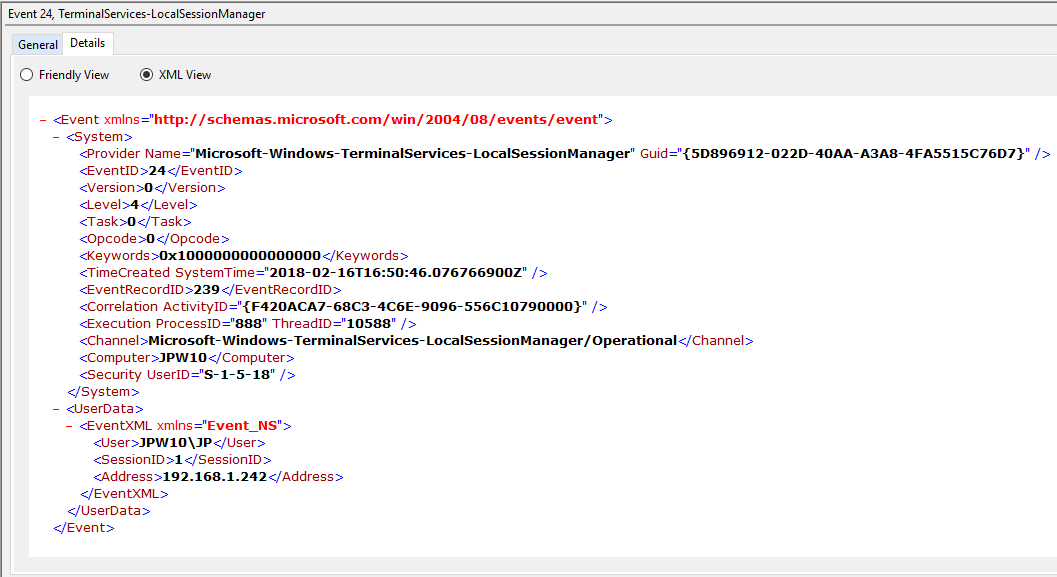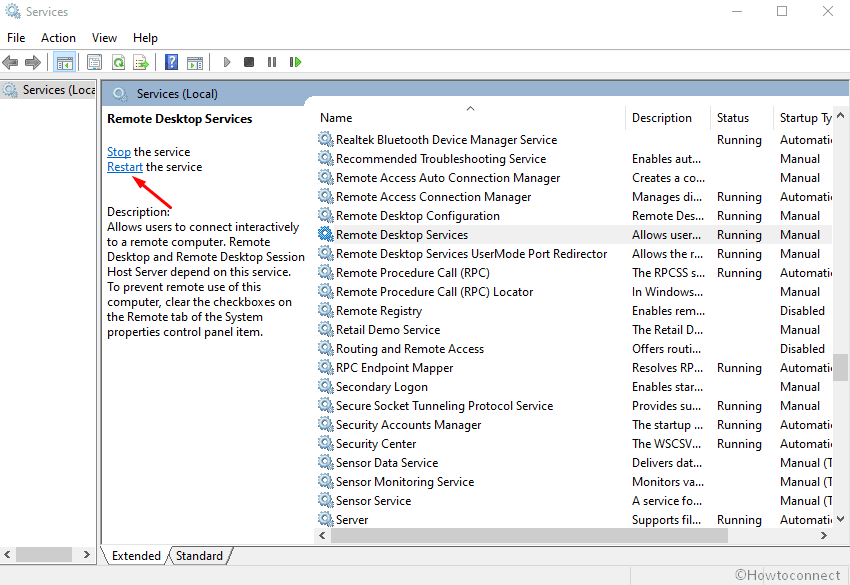My one server(2012r2) not connecting with remote.i want to restart the remote service.Please suggest me how to restart the remote services without Restart the server. Edited by Naved Anjum Monday, December 4, 2017 11:28 AM. Dec 04, 2017 My one server(2012r2) not connecting with remote.i want to restart the remote service.Please suggest me how to restart the remote services without Restart the server. Edited by Naved Anjum Monday, December 4, 2017 11:28 AM.
-->Applies to: Windows Server (Semi-Annual Channel), Windows Server 2019, Windows Server 2016, Windows Server 2012 R2, Windows Server 2012
Creates connections to Remote Desktop Session Host servers or other remote computers, edits an existing Remote Desktop Connection (.rdp) configuration file, and migrates legacy connection files that were created with Client Connection Manager to new .rdp connection files.
Syntax
Parameters
| Parameter | Description |
|---|---|
<connectionfile> | Specifies the name of an .rdp file for the connection. |
/v:<server>[:<port>] | Specifies the remote computer and, optionally, the port number to which you want to connect. |
| /admin | Connects you to a session for administering the server. |
| /f | Starts Remote Desktop Connection in full-screen mode. |
/w:<width> | Specifies the width of the Remote Desktop window. |
/h:<height> | Specifies the height of the Remote Desktop window. |
| /public | Runs Remote Desktop in public mode. In public mode, passwords and bitmaps aren't cached. |
| /span | Matches the Remote Desktop width and height with the local virtual desktop, spanning across multiple monitors if necessary. |
/edit <connectionfile> | Opens the specified .rdp file for editing. |
| /migrate | Migrates legacy connection files that were created with Client Connection Manager to new .rdp connection files. |
| /? | Displays help at the command prompt. |
Remarks
Default.rdp is stored for each user as a hidden file in the user's Documents folder.
User created .rdp files are saved by default in the user's Documents folder, but can be saved anywhere.
To span across monitors, the monitors must use the same resolution and must be aligned horizontally (that is, side-by-side). There is currently no support for spanning multiple monitors vertically on the client system.
Examples
To connect to a session in full-screen mode, type:
or
To assign width/height, type:
Mstsc Service Fee
To open a file called filename.rdp for editing, type:

Additional References
-->To determine an appropriate response to this issue, see the following:
- Does the Remote Desktop Services service becomes unresponsive (for example, the remote desktop client appears to 'hang' at the Welcome screen).
- If the service becomes unresponsive, see RDSH server memory issue.
- If the client appears to be interacting with the service normally, continue to the next step.
- If one or more users disconnect their remote desktop sessions, can users connect again?
- If the service continues to deny connections no matter how many users disconnect their sessions, see RD listener issue.
- If the service begins accepting connections again after a number of users have disconnected their sessions, check the connection limit policy.
RDSH server memory issue
A memory leak has been found on some Windows Server 2012 R2 RDSH servers. Over time, these servers begin to refuse both remote desktop connections and local console sign-ins with messages like the following:
The task you are trying to do can't be completed because Remote Desktop Service is currently busy. Please try again in a few minutes. Other users should still be able to sign in.
Remote Desktop clients attempting to connect also become unresponsive.
To work around this issue, restart the RDSH server.
To resolve this issue, apply KB 4093114, April 10, 2018—KB4093114 (Monthly Rollup), to the RDSH servers.
RD listener issue
Mstsc Service Portal
An issue has been noted on some RDSH servers that have been upgraded directly from Windows Server 2008 R2 to Windows Server 2012 R2 or Windows Server 2016. When a Remote Desktop client connects to the RDSH server, the RDSH server creates an RD listener for the user session. The affected servers keep a count of the RD listeners that increases as users connect, but never decreases.
You can work around this issue with the following methods:
- Restart the RDSH server to reset the count of RD listeners
- Modify the connection limit policy, setting it to a very large value. For more information about managing the connection limit policy, see Check the connection limit policy.
To resolve this issue, apply the following updates to the RDSH servers:
- Windows Server 2012 R2: KB 4343891, August 30, 2018—KB4343891 (Preview of Monthly Rollup)
- Windows Server 2016: KB 4343884, August 30, 2018—KB4343884 (OS Build 14393.2457)
Check the connection limit policy
You can set the limit on the number of simultaneous remote desktop connections at the individual computer level or by configuring a group policy object (GPO). By default, the limit is not set.
To check the current settings and identify any existing GPOs on the RDSH server, open a command prompt window as an administrator and enter the following command:
Mstsc Service

Restart Mstsc Service
After this command finishes, open gpresult.html. In Computer ConfigurationAdministrative TemplatesWindows ComponentsRemote Desktop ServicesRemote Desktop Session HostConnections, find the Limit number of connections policy.
Mstsc Service Restart
- If the setting for this policy is Disabled, then group policy is not limiting RDP connections.
- If the setting for this policy is Enabled, then check Winning GPO. If you need to remove or change the connection limit, edit this GPO.
To enforce policy changes, open a command prompt window on the affected computer, and enter the following command:

Comments are closed.